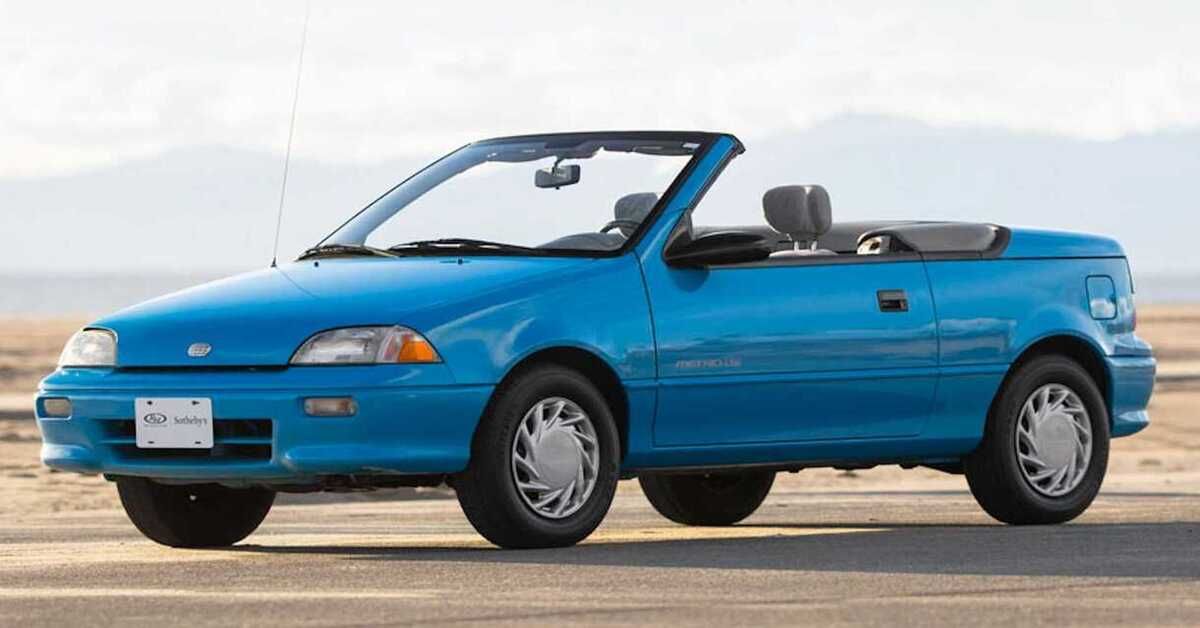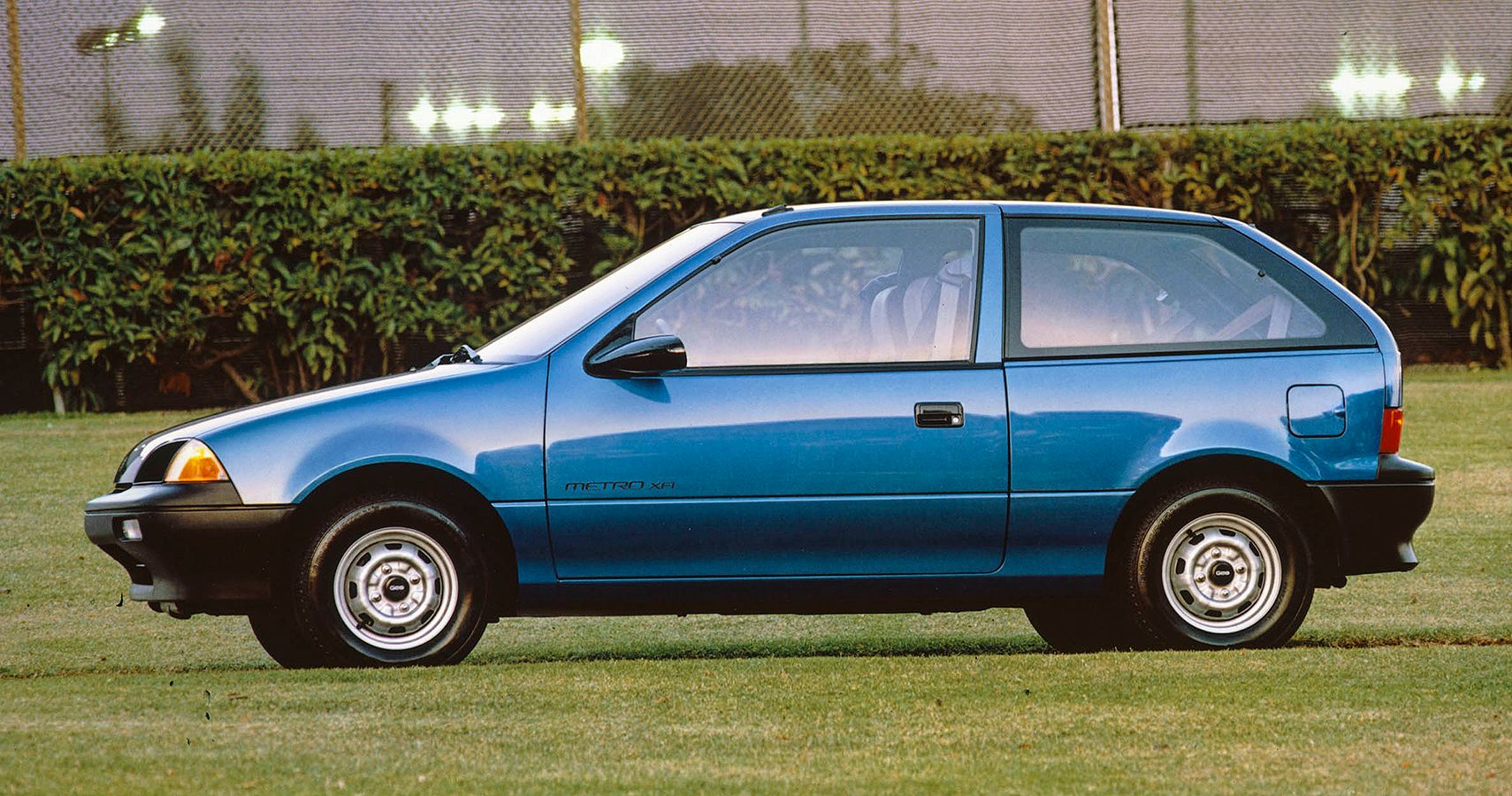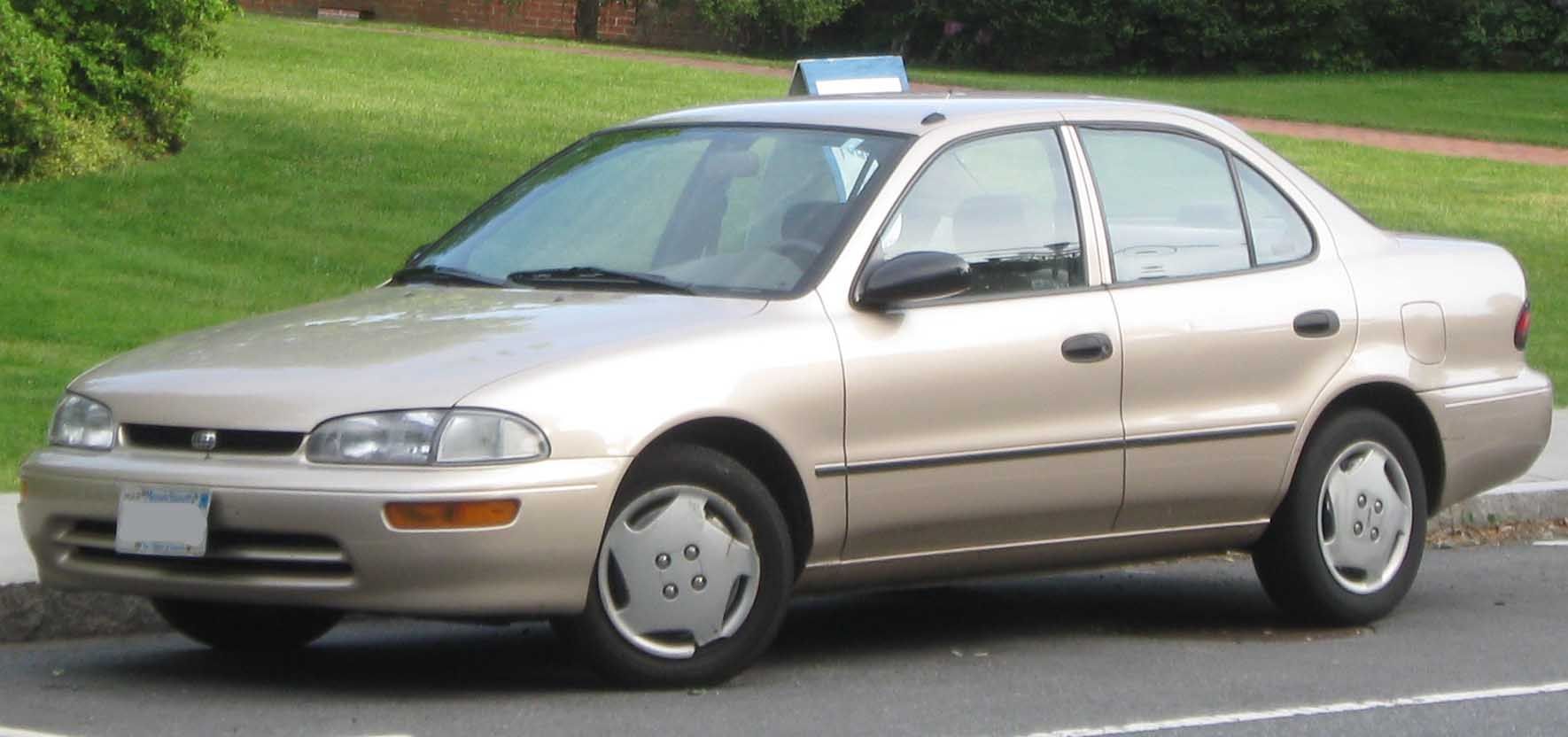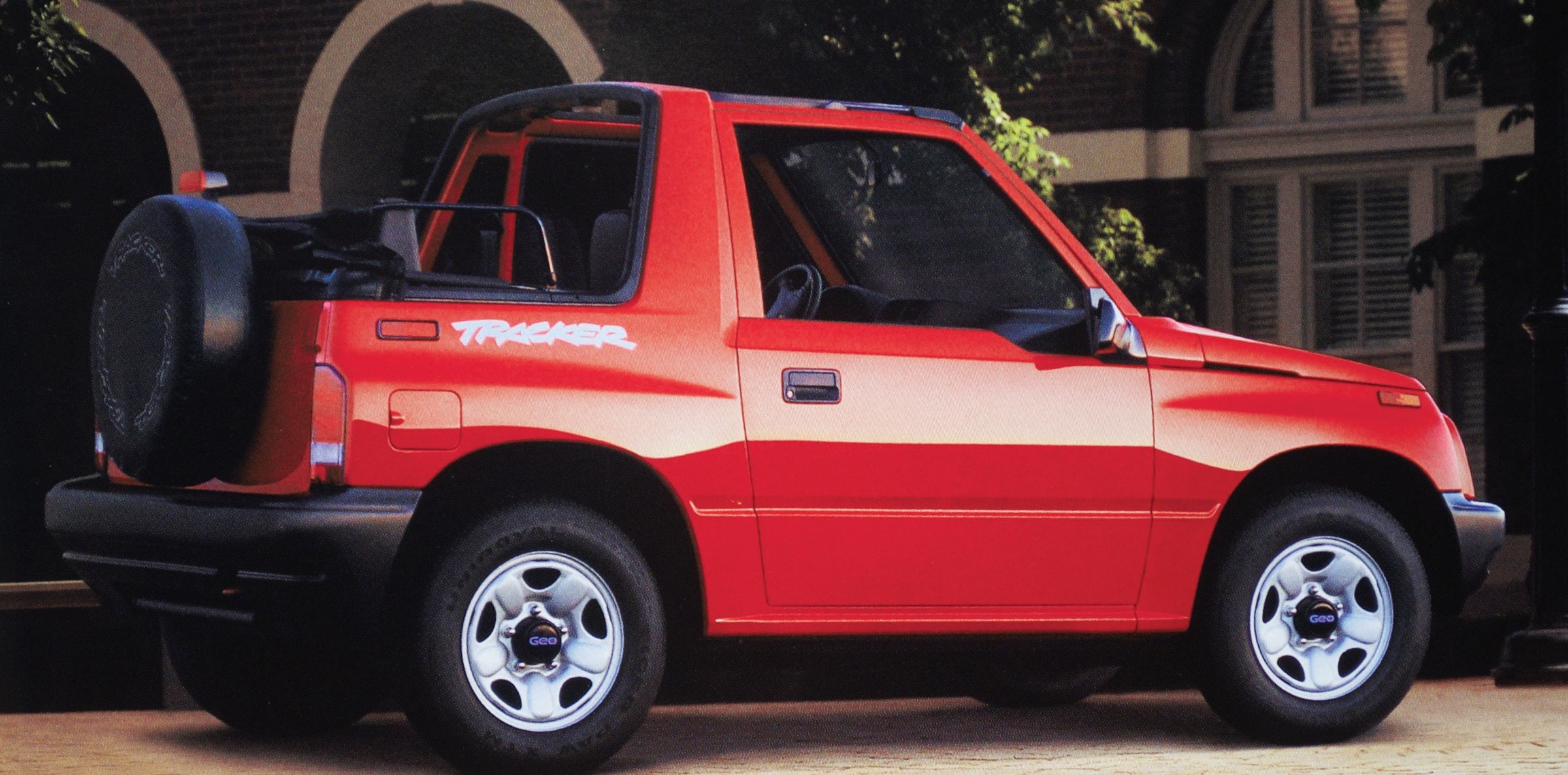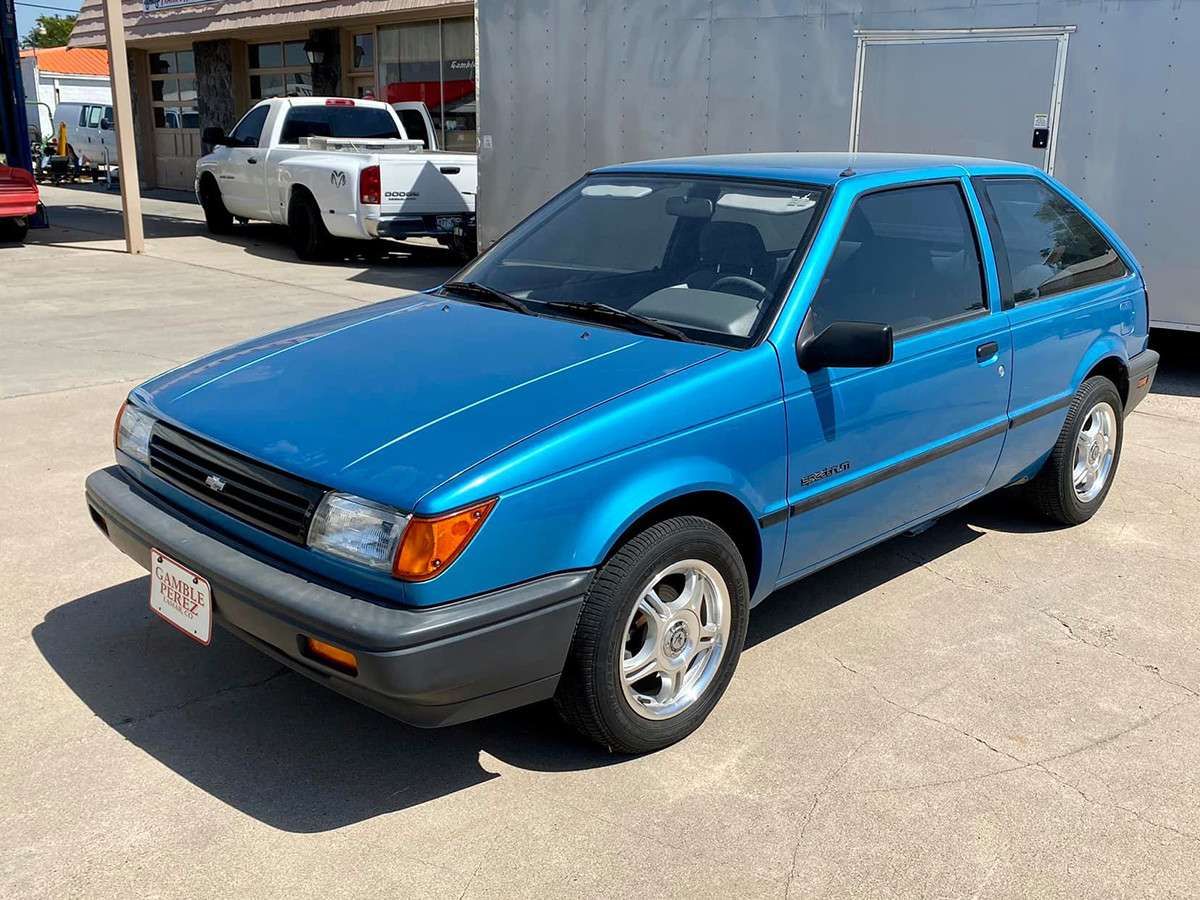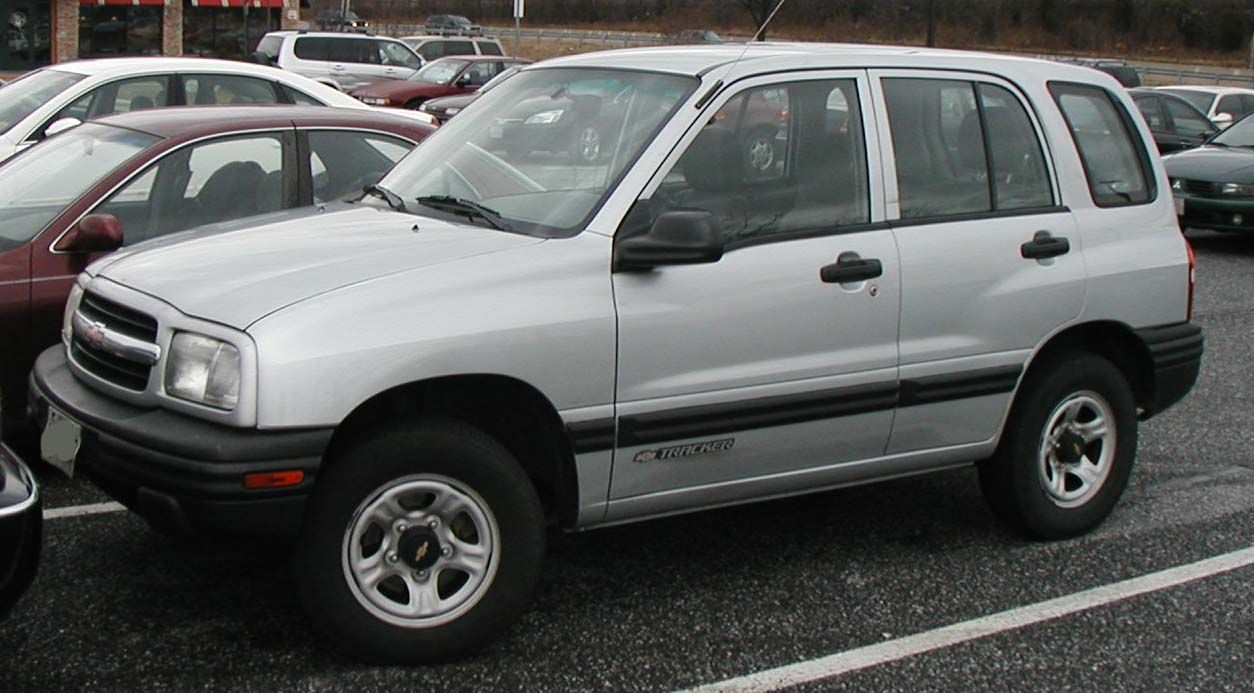If you are an automotive enthusiast, you probably have had your own experience with badge engineering. The practice of taking a car, upgrading or downgrading it, and slapping a different logo on it is a practice we see constantly. It's the reason your Chevy Cavalier is suspiciously similar to your Pontiac Sunfire - they are ultimately the same car.
But when cars are imported from another country for badge engineering, we see all types of executive choices. Some companies like Ford imported the Mazda B-series of trucks but changed the front facia to look more like a Ford before selling them as the Ford Courier. Chrysler on the other hand imported the Mitsubishi Starion and sold it as the Chrysler Conquest without any noticeable changes from its overseas sibling.
Back in the late 80s, GM had its own idea of badge engineering. Instead of choosing a GM brand to put on an overseas import, they chose to make their own brand to house these imports.
Geo was formed in the late ’80s, and all of GM’s small imports including the Metro and Prizm would be branded as Geos.
Geo Started Very Well
From the start, Geo was heavily advertised. “Getting To Know Geo” commercials were on TV constantly, and while the Geo brand imported cars from Isuzu, Suzuki, and Toyota, GM was quick to let people know that these were Geos, not some other import.
Geo was also great for people who were scared to buy an import due to a lack of support in their area. In the mid-80s, Japanese cars were still considered imports, and depending on where you were in the country, support could be hard to find. But a Geo was a GM product and could be serviced at any GM shop.
Geo also did well to import cars that performed well. Every car in the lineup was either incredibly fuel-efficient, indestructible, or cheap enough to warrant a purchase.
The Geo Fuel Sippers
A brand is nothing without a solid set of cars, and Geo did well to make their small lineup attractive. The Geo Prizm had the bones of a Toyota Corolla but was ⅓ less expensive than the Toyota. Prizms are one of the most indestructible cars built in America, and it shows with most still on the road today.
The Geo Metro was, and still is, one of the most fuel-efficient cars ever built. The Metro was a rebadged Suzuki Cultus introduced in 1989. This small hatchback was unbelievably fuel-efficient, offering a combined 47MPG from the XFI model - one of the highest MPG ratings of all time, especially out of a regular gas engine. The Metro was also offered as a drop-top convertible roadster later in its life, combining a fun-looking car with excellent fuel mileage.
The Sporty Geos
I know it may seem like an oxymoron to call any Geo “sporty”, but the brand did attempt to spice up its image with a sports coupe called the Geo Storm, this rebadged Suzuki Impulse was a killer car for anyone in the market for an affordable liftback in the early 90s. It offered interesting styling including hideaway headlights upon release, as well as a “wagon back” option, for everyone who wanted a sports car feel, but the practicality of a wagon.
One of, if not the most recognizable Geos is the Geo Tracker. This rebadged Suzuki Sidekick was a capable mini SUV that many drivers have used for cheap offroading over the years. When the Tracker was released in 1989, it was only offered in four-wheel-drive, with a two-wheel-drive option offered later. Surprisingly, the Tracker was offered as a hardtop as well as a convertible and was priced for first-time car buyers. It is hard to imagine a four-wheel-drive offroader marketed for a first-time buyer, but the sheer amount of Trackers still on the road today, shows how capable and durable they were built to be.
The Forgotten Geo
The one Geo car often forgot about was the Geo Spectrum, only offered in 1989. It was a somewhat sporty hatchback and sedan based on the Isuzu Gemini, but this Geo was short-lived and replaced almost immediately by the Geo Storm liftback as a much sportier and attractive offering for a small car.
Unfortunately, the Spectrum is just as forgettable as you’d expect. It was a car only produced for one year and among the deep abyss of small late 80s compacts, it did not get much attention, unfortunately. Even today, the Spectrum is unbelievably rare to find.
The End Of Geo
For the 1998 model year, the Geo name was dropped from the GM lineup. After 1.9 million cars were sold, the final Geo was made in 1997. The truth was, people, didn’t identify with the brand name. When people came into showrooms they asked to see “Metros”, “Trackers”, and “Prizms”, not many really acknowledged the Geo name as its own brand.
By 1997, the world had also changed. Not only were imports viewed in a much better light than before, but GM was willing to put the Geo line of cars in their showrooms as Chevrolets.
While Geo died in 1997, the cars lived on for years. The Metro, Tracker, and Prizm lived on as Chevrolets into the early 2000s, selling well until the final Metro was sold in 2001, Tracker in 2004, and Prizm in 2002.
Today, Geos live on in dedicated fan clubs for each car, and while the cars may be discontinued, each one still on the road serves as a reminder of a time when imports were not as widely accepted. When they had to be resigned to their own brand instead of carrying the badge of a more respected car company.
Oh how far we’ve come!

